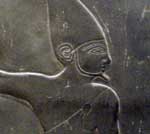
King Narmer: Successor to King Scorpion and succeeded by King Hor-Aha.
Dynasty 0 begins with the unification of Upper and Lower Egypt with King Narmer as the first ruler of the "Two Lands", in approx. 3100 BC. He is considered the first of the True ancient Egyptian Pharaohs.
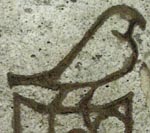
King Hor-Aha: Successor to King Narmer and succeeded by King Djer.
The first king of the first Dynasty around 3050 BC, his reign began by inheriting Egypt and fighting to keep it. He founded the capital city of Memphis and ruled for many years. He then died in the mighty grip of a Nile hippopotamus.
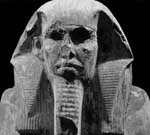
King Djoser: Successor to King Sanakhte and succeeded by King Sekhemkhet.
The second king of the third Dynasty (approx. 2668-2649 BC), he was the first to build an Egyptian pyramid - the Step Pyramid. He was advised by his Vizier Imhotep and faced the obstacles of a 7 year long drought and famine.
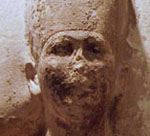
King Snefru: Successor to King Huni and succeeded by King Khufu.
Dynasty 4 (approx. 2613 BC) begins with King Snefru inheriting the throne of his father and completing his unfinished pyramid. He goes on to build two of his own, one of which is the first True Pyramid.
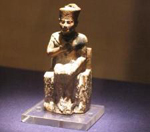
King Khufu: Successor to King Snefru and succeeded by King Djedefre.
The second king of the forth Dynasty, King Khufu is the builder of the only wonder of the ancient world still standing out of the 7. His success as builder of the tallest man-made structure was never again matched until the 19th century, 4.5 thousand years later.
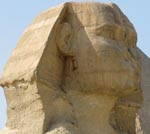
King Khafre: Successor to King Djedefre and succeeded by King Menkaure.
The 4th king of the 4th Dynasty, King Khafre is the builder of the second Pyramid at Giza and is thought to be the builder of the Sphinx as well as it being his portrait. His reign brought prosperity to the country.
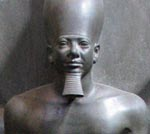
King Menkaure: Successor to King Khafre and succeeded by King Shepseskaf.
The 5th king of the 4th Dynasty, King Menkaure is the builder of the third and final pyramid of Giza, and is said to have been a kinder and gentler pharaoh than his predecessors. Herodotus recorded a legend about his reign in which he had to appease the Gods to lift a curse on the land.
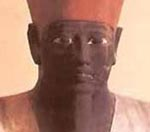
King Mentuhotep I: Successor to King Inteff III and succeeded by King Menuhotep II.
The 4th king of the 11th Dynasty (approx. 2060-2010 BC), he won the throne after many battles for control with King Inteff III and rival nomarchs. He managed to unify Egypt once again after 140 years of unrest and chaos.
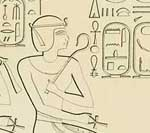
King Ahmose: Successor to King Kamose and succeeded by King Amenhotep I.
The first ancient Egyptian Pharaoh of the 18th Dynasty (approx. 1550–1525 BC), King Ahmose was the Pharaoh who finally expelled the Hyksos after his father had waged war on them and died in battle, and his older brother following in those footsteps.
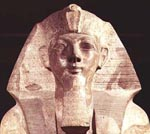
Queen Hatshepsut: Successor to King Thutmosis II and succeeded by King Thutmosis III.
Co-regent with her half-brother, Queen Hatshepsut ruled during the 18th Dynasty for 20 years until her death. She had suppressed the rule of Thutmosis III and appointed herself as King; she also built one of Egypt´s most famous mortuary temples - a masterpiece in architecture.
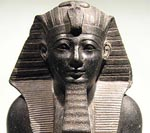
King Thutmosis III: Successor to King Thutmosis II and succeeded by King Amenhotep II.
The 5th ancient Egyptian Pharaoh of the 18th Dynasty (approx. 1504-1450), King Thutmosis III was known as the Egyptian Napoleon for his ambitious empire-building. He ruled after Hatshepsut, who had usurped his position as the true heir, had died (or was killed).
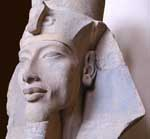
King Akhenaten: Successor to King Amenhotep III and succeeded by King Smenkhkare & King Tutankhamun.
The king who revolutionized Egypt with new artistic styles and new religious beliefs. He built one of the earliest forms of monotheism and made the sun the only God. His wife is the mysterious Nefertiti.
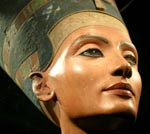
Queen Nefertiti: Great Royal Wife of King Akhenaten, successor to King Amenhotep III.
Although she was not the ruler of ancient Egypt herself, her fame and power are notable enough to give her a spot on the list of famous ancient Egyptian Pharaohs. She was an enigma and a beauty, whose origin as well as death are shrouded in mystery.
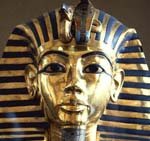
King Tutankhamun: Successor to King Akhenaten and succeeded by King Ay.
The boy king who took over the throne of Egypt at the age of 9. He is the center of much speculation regarding the cause of his death at age 19. One of the most famous ancient Egyptian pharaohs due to the discovery of his tomb in tact and full of mystical treasures, espcially his alluring golden death mask.
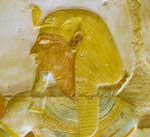
King Seti I: Successor to King Ramesses I and succeeded by King Ramesses II.
The great father who taught his son the art of war and leadership(and may also have appointed his son to co-rule with him for many year). His period was marked by a flourishing in art and culture, and his son went on to be Egypt´s greatest pharaoh.
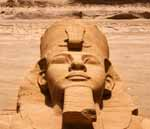
King Ramesses II: Successor to King Set i and succeeded by King Merneptah.
The most enduring icon of ancient Egyptian power and majesty, King Ramesses is the 2nd pharaoh of the 19th Dynasty and ruled Egypt for 67 years. He had over 100 children and was known for his monument building and the peace-treaty with the Hittites.
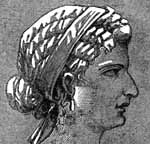
Queen Cleopatra: Successor to King Ptolemy XII and was the last Pharaoh to rule Egypt.
A descendant of one of Alexander´s generals, Macedonian/Greek by blood, Queen Cleopatra VII took over the throne at age 19 after her father´s death. She was to co-rule with her brother and husband, but she managed to dispose of him. She seduced Rome´s Julius Caesar and Mark Antony, ruling Egypt till her suicide in 30 BC.




 Facebook
Facebook